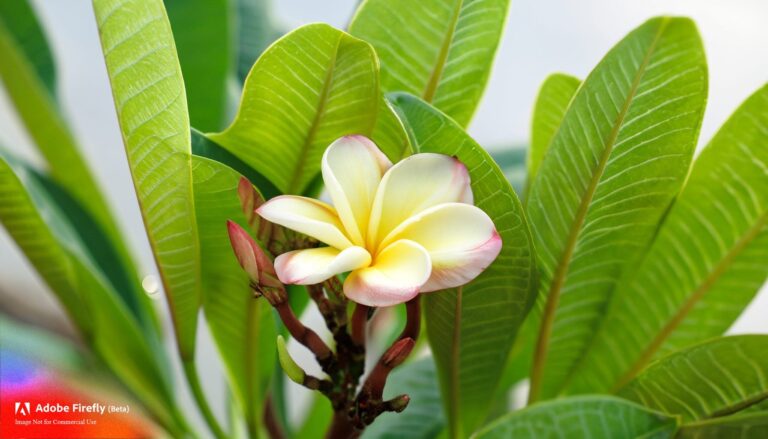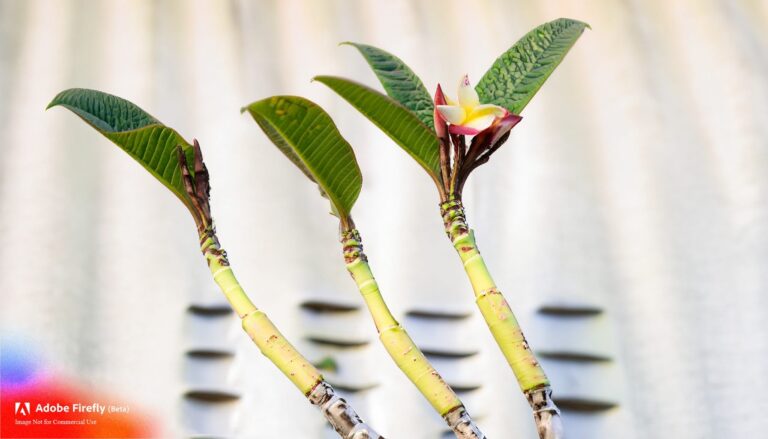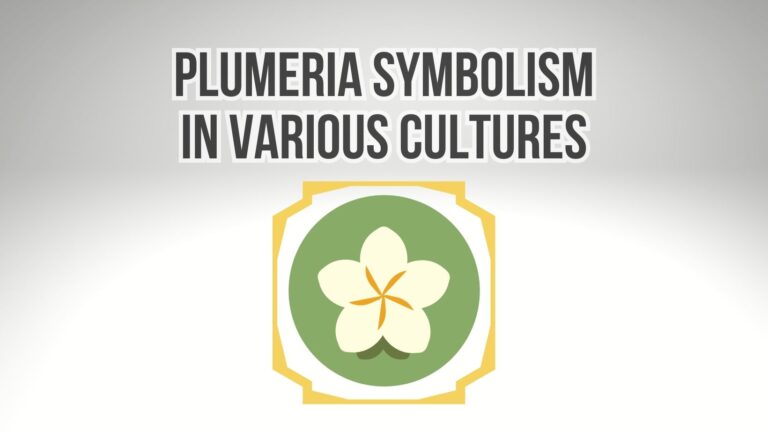
- Groundcovers: Low-growing groundcovers can help conserve moisture, control weeds, and create an attractive base around the plumeria. Consider options like creeping thyme, liriope, or sedum, which provide a lush carpet of foliage and can tolerate some shade from the plumeria’s canopy.
- Ornamental grasses: Grasses can add texture and movement to the garden while contrasting with the plumeria’s bold blooms. Select ornamental grasses such as fountain grass (Pennisetum), Mexican feather grass (Nassella), or muhly grass (Muhlenbergia) that thrive in your region and offer a visually appealing backdrop.
- Tropical foliage plants: Since plumerias are often associated with tropical landscapes, you can enhance the overall aesthetic by planting other tropical foliage plants nearby. Consider options like banana plants (Musa), bird of paradise (Strelitzia), or crotons (Codiaeum variegatum) to create a lush and exotic ambiance.
- Flowering perennials: Choose flowering perennials that complement the plumeria’s color palette and provide additional bursts of color. For example, consider planting daylilies, hibiscus, or salvias that bloom in shades of red, pink, yellow, or white alongside the plumeria to create a vibrant and visually appealing garden display.
- Native plants: Incorporating native plants into the landscape promotes biodiversity and attracts local pollinators. Research native flowering plants that thrive in your region and select those that can tolerate the same growing conditions as the plumeria. This will create a natural garden and support the local ecosystem.
- Succulents: If you live in a region with arid conditions, succulents can be an excellent choice as they require minimal water and can complement the plumeria’s drought-tolerant nature. Plants like agave, yucca, or sedum can add architectural interest and a touch of desert beauty to the garden.
Good Plumeria Companion Plants
When selecting companion plants for plumeria, it’s important to consider those that thrive in similar growing conditions and complement the tropical beauty of the plumeria tree. Here are some good companion plants for plumeria:
- Hibiscus (Hibiscus spp.): Hibiscus and plumeria share tropical origins and vibrant, showy flowers. Their colors and shapes can create a visually stunning combination in the garden. Choose hibiscus varieties that have similar sunlight and watering requirements as your plumeria.
- Bougainvillea (Bougainvillea spp.): Bougainvillea is another tropical vine that produces colorful bracts in shades of pink, purple, red, or orange. Planted alongside plumeria, bougainvillea can provide a striking backdrop and create a tropical oasis feel.
- Bird of Paradise (Strelitzia reginae): Bird of Paradise plants feature unique and flamboyant orange and blue flowers that resemble tropical birds. These architectural plants pair well with plumeria, adding height and drama to the landscape.
- Croton (Codiaeum variegatum): Crotons are tropical shrubs with vibrant, variegated leaves in shades of red, orange, yellow, and green. Their colorful foliage contrasts beautifully with the plumeria’s flowers, creating a visually appealing combination.
- Lantana (Lantana spp.): Lantana is a low-maintenance flowering plant that comes in a variety of colors, including pink, orange, yellow, and purple. It attracts pollinators and butterflies, adding movement and life to the garden while complementing the plumeria’s blooms.
- Plumbago (Plumbago auriculata): Plumbago is a versatile plant that produces clusters of blue, white, or pink flowers. It is known for its ability to attract butterflies and hummingbirds. Planted near plumeria, plumbago can create a lovely contrast and add a splash of color.
- Mexican Flame Vine (Senecio confusus): Mexican Flame Vine is a vigorous climber with clusters of orange flowers that attract butterflies and hummingbirds. Its bright blooms can enhance the tropical theme and create a lively atmosphere when grown alongside plumeria.
- Pentas (Pentas lanceolata): Pentas is a perennial plant that produces clusters of small, star-shaped flowers in shades of red, pink, lavender, or white. They are excellent for attracting pollinators and can add a burst of color to complement the plumeria’s blossoms.
Remember to consider the specific growing requirements of each plant, such as sunlight, water, and soil preferences, to ensure they are compatible with the plumeria’s needs. By selecting companion plants that thrive in similar conditions and offer complementary colors and forms, you can create a stunning and harmonious garden display.
What Plants Compliment Frangipani?
Here are some plants that can complement frangipani:
- Agapanthus (Agapanthus spp.): Agapanthus features clusters of showy, globe-shaped flowers in shades of blue, purple, or white. Their tall flower stalks and lush foliage make a great backdrop for the frangipani tree.
- Bromeliads (Bromeliaceae family): Bromeliads are tropical plants known for their colorful and exotic foliage. They come in various sizes, shapes, and colors, such as red, orange, yellow, or green. Planted beneath or near the frangipani tree, bromeliads can add texture and vibrant hues to the landscape.
- Plumbago (Plumbago auriculata): Plumbago is a versatile shrub that produces clusters of blue, white, or pink flowers. Its soft colors and delicate blooms create a beautiful contrast against the frangipani’s bold and vibrant flowers.
- Society Garlic (Tulbaghia violacea): Society Garlic is a herbaceous perennial with clusters of small, fragrant purple flowers. Its slender and upright foliage complements the frangipani tree and adds a touch of elegance to the garden.
- Bougainvillea (Bougainvillea spp.): Bougainvillea is a tropical vine renowned for its profusion of colorful bracts in shades of pink, purple, red, or orange. Its cascading and vibrant blooms can create a stunning display when planted near or intertwined with the frangipani tree.
- Cape Honeysuckle (Tecoma capensis): Cape Honeysuckle is a shrub with vibrant orange or red tubular flowers that attract hummingbirds. It’s warm colors and sprawling growth habit can contrast the frangipani tree’s upright form.
- Mexican Flame Vine (Senecio confusus): Mexican Flame Vine is a vigorous climber with clusters of orange flowers. When grown nearby, its cascading vines and vibrant blooms can create a visually appealing backdrop or complement the frangipani’s branches.
- Gardenia (Gardenia jasminoides): Gardenias are known for their fragrant white flowers and glossy green leaves. Their elegant and classic appearance can complement the frangipani tree, especially when planted as an understorey or in nearby containers.
Summary
Remember to provide adequate spacing between plants to avoid overcrowding and competition for resources. Additionally, consider the sunlight and watering requirements of the chosen companion plants to ensure they are compatible with the plumeria’s needs. You can create a beautiful and harmonious garden around your plumeria tree with careful selection.






